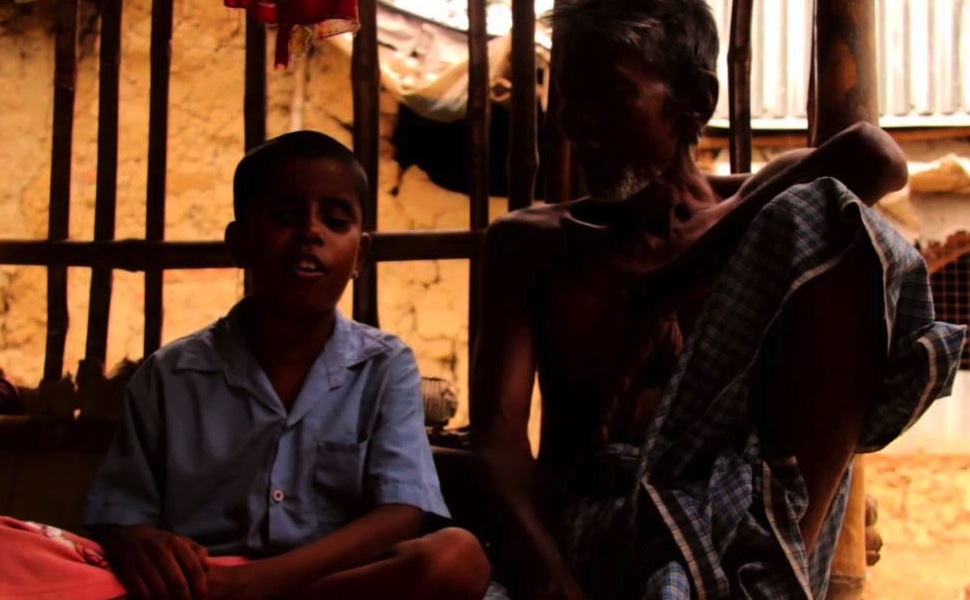This film shows the sightless world of tiny Hassibullah and his sonic interpretations of space, day, time, seasons and the physical motion of an everyday touchable world.
In the impressionistic montage at the opening of the film, we catch glimpses of a train, lights, a giant wheel and water and hear music dominated by an incessant drumming. This is a precursor to Hassibullah’s world which Torsha Banerjee takes us into with great gentleness and patience. We will get to know these, the railway track, the giant wheel at the Eid fair, the water in the forest, rain, through Hassibullah’s impressions of them, not the way we see, but the way he ‘sees’ them.
The filmmaker, Torsha Banerjee, spends a considerable amount of time to establish the blind school, the children there and their activities. It is only after a while that we see Hassibullah, the little blind boy Torsha chooses to follow home. Our journey in getting to know Hassibullah is probably not unlike the filmmaker’s, who must have first seen the school, met several children there, and then met Hassibullah and then followed him home.
It is only a coincidence that I saw Sukhdev’s An Indian Day/India 67 (for the 3rd or 4th time) and Tender is the Sight (for the 2nd time) on the same day. In the morning, I had once again been struck by how Sukhdev uses image, sound and montage/editing to tell you almost exactly what he thinks and sees in India 67. Torsha, on the other hand, uses editing more gently, not so much as a political tool or a social commentary, but she does use the elements of sound and image very powerfully to introduce us to Hassibullah not through the questions she wants to ask him or through her own perspective on his world, but almost as if she is trying to get into his head and understand the world as he understands it. She does not interview him or his family; she does not talk to us of his plight or his circumstances. The camera examines his world, not from a place of pity or compassion, but trying to experience it as Hassibullah lives in it and senses it.
Hassibullah tells us of himself through his incessantly drumming fingers, and his cocked head as he hears sounds intensely, and tries to reproduce them. We begin to hear the world too, as he does, and hear him as he talks to us with his fingers.
As sighted people, we too involuntarily begin to cock our heads and listen to what is happening in the film. The camera work aids this intense desire to communicate with Hassibullah on his own terms by a stillness and austerity, that distills the visuals to an essence. There is a beauty that becomes the beauty of sight, of knowing that we can see, as we experience the intensity with which Hassibullah hears. There is no exoticism of poverty here, and yet, we see Hasibullah’s village, his house, the poverty of his surroundings, not as crushing or hopeless, but for what it is, because of the serenity of the visuals.
The only question the filmmaker asks Hassibullah within the film is at the end in the closing shot of the film, him framed in a blinding light and her voice asking him, “Can you see the light?” And I am not certain whether she asks it of him, or us.
Bengali, Documentary, Color
https://www.youtube.com/watch?v=dpaRAj7bPRk


